Art & Exhibitions
Berlin’s Gallery Weekend Forges Path to Success
Energy, sales, and loads of sublime art mark the 10th anniversary.

Energy, sales, and loads of sublime art mark the 10th anniversary.

Alexander Forbes

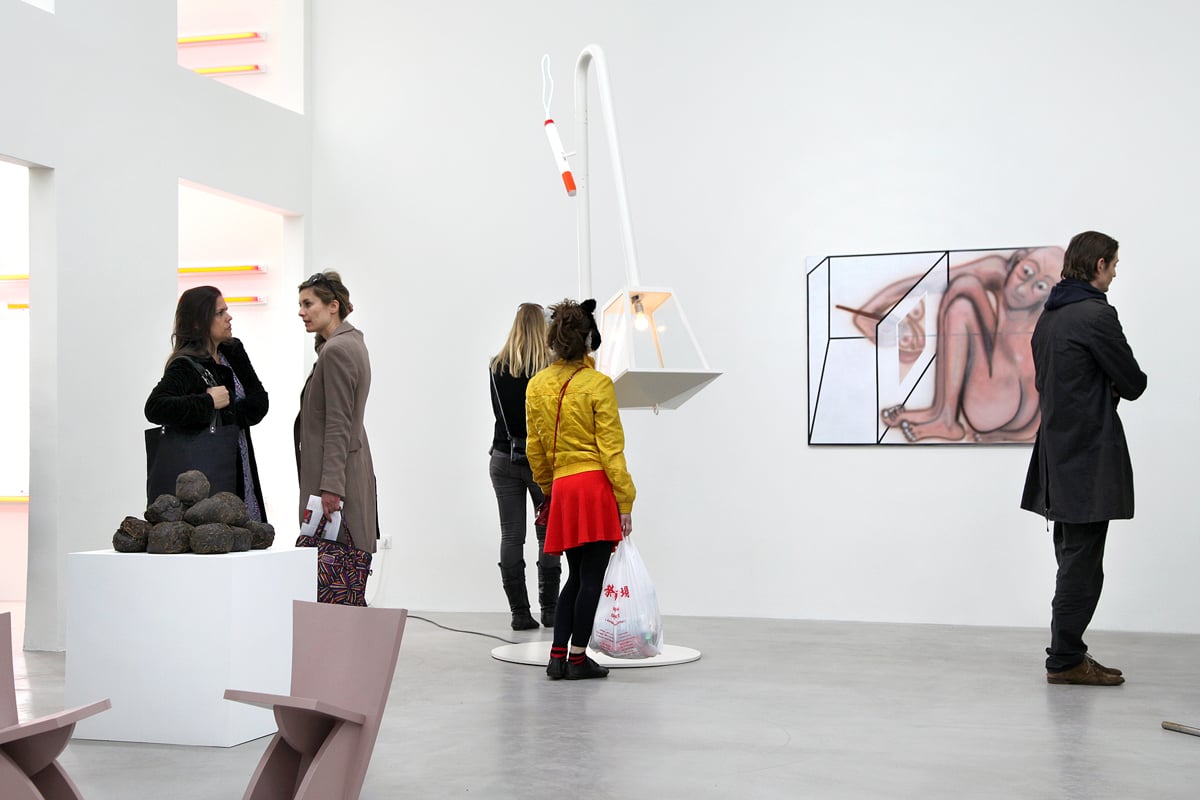
20 Years Galerie Neu at its new space on Linienstrasse
Photo: Marco Funke, courtesy Gallery Weekend Berlin.
In its 10th year, the “weekend” in Gallery Weekend Berlin’s name was something of a misnomer. While May 1 (Labor day in Germany) was set out as a down day between previews on Wednesday and the main event, most galleries stayed open, rightfully anticipating that international collectors hungry for an early bite of the best work would come knocking. So, by the time director Maike Cruse mounted the steps of a World War Two Rosinenbomber (Raisin Bomber) to give her welcome speech for Gallery Weekend’s 1,200 person dinner held in the former Tempelhof airport’s arrivals hall on Saturday evening, many had been roaming the city for four days already, with one more still to go.
Then again, with 50 galleries participating officially, and easily as many more worthy shows on view in the city, any less time would have been far from sufficient. Although 2014 didn’t top the record for the most to take place during Gallery Weekend, the continual growth of Berlin’s dealers and their artists means that overall exhibition quality is indeed at a new high point this year.
The gallery marathon began on Wednesday. And, when tackling Gallery Weekend, it’s advisable to start with subtle work first: Geta Brătescu, Huma Bhabha, and Wolfgang Laib were at the top of that list this year. Works at the octogenarian Brătescu’s third exhibition with Barbara Weiss span four decades. It’s a gem that truly called for fresh eyes.
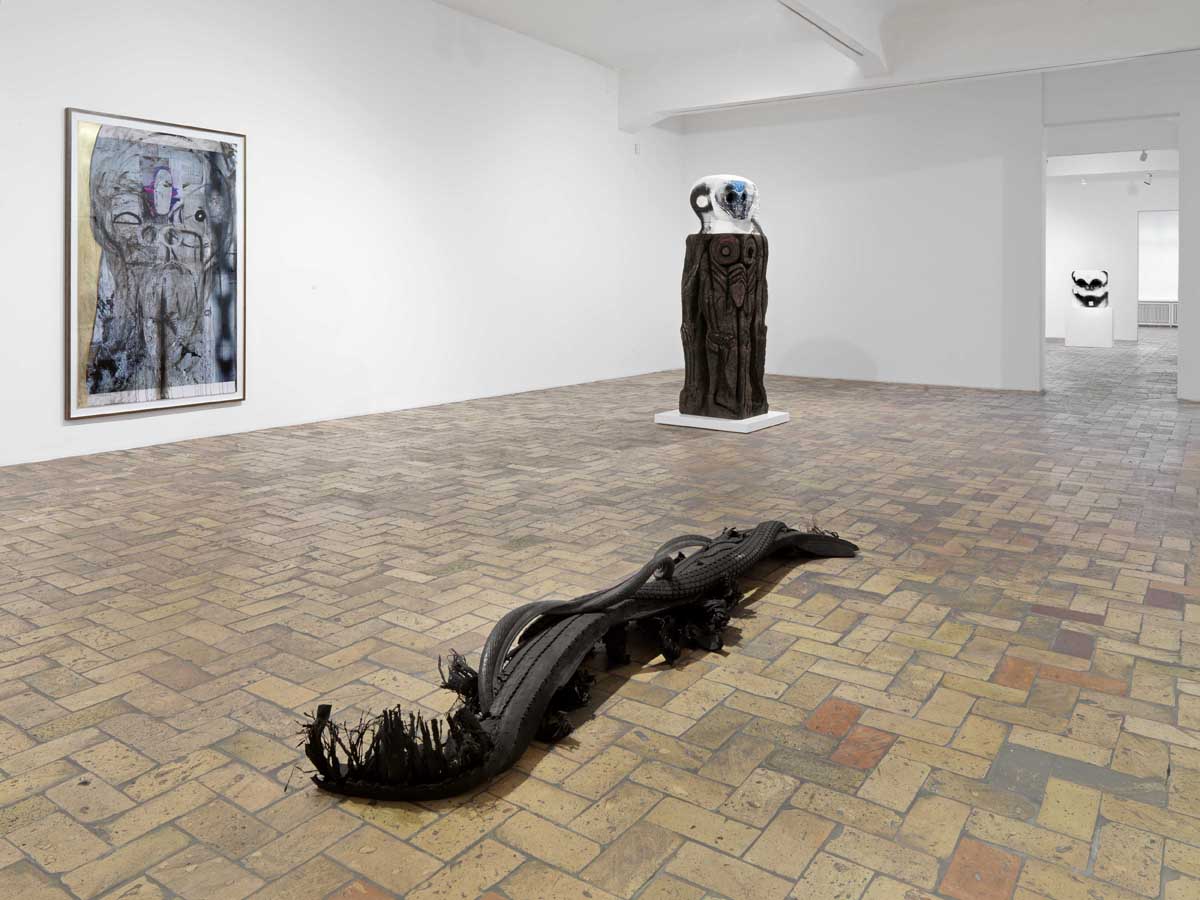
Installation View, Huma Bhabha, VW Berlin
Courtesy VW (VENEKLASEN/WERNER)
Bhabha shows all new work produced while at a residency last fall at Berlin’s American Academy at VW Berlin, Michael Werner and Gordon Veneklasen’s Berlin project space. The works continue Bhabha’s long-running thematic concerns but are more playful in their breadth of materiality. Bhabha seems to have caught the Berlin bug, having a particularly prolific period while in the city: “It just happened that I was inspired, I had a lot of time, and I had no distractions, so I ended up doing a lot of work,” she said.
Where museum-acquisition-ready work was concerned, likely none across the Gallery Weekend offer (save perhaps Aurel Scheibler’s collector-favorite showing of Philip Guston) has Buchmann beat. There, one of only three of Wolfgang Laib’s Wax Rooms is on display. Inside the vaguely coffin-shaped room, the soothing olfactory qualities of the beeswax mixes with its rather negative aesthetic appeal to create space at once womb-like and terrifying. The price? A cool €500,000.
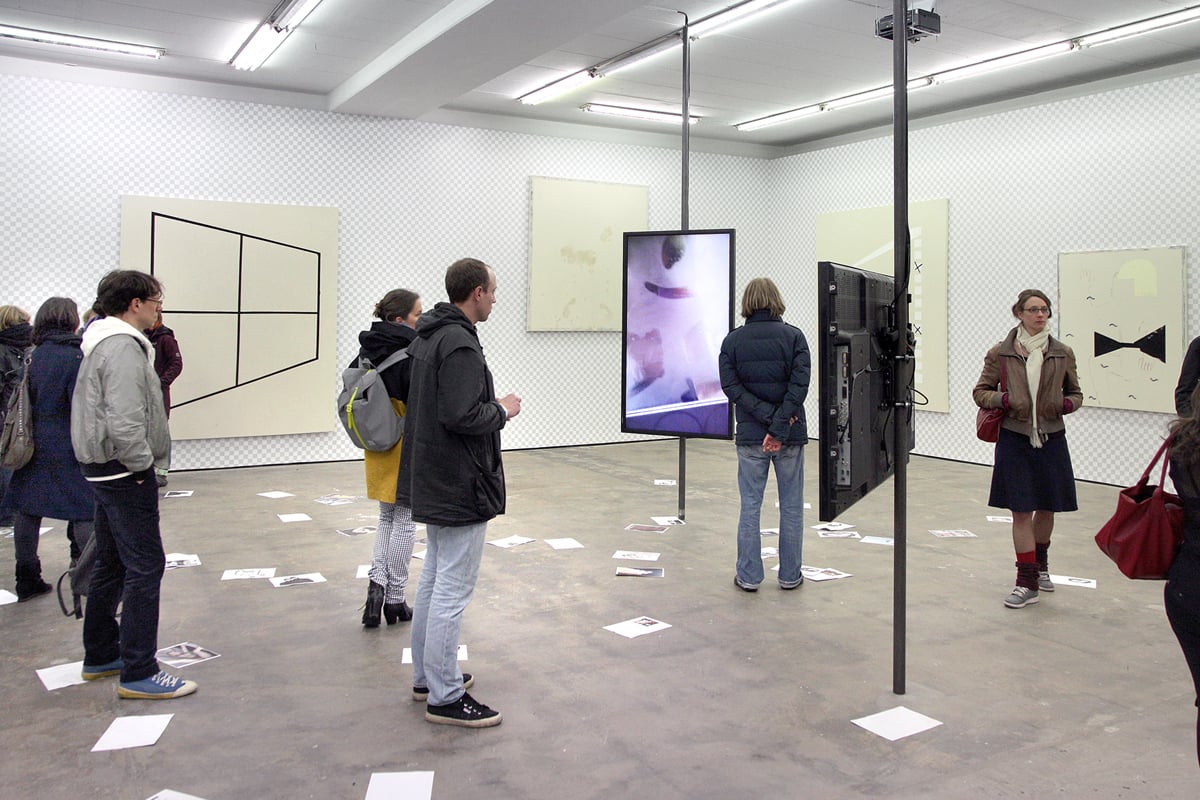
Installation View, Florian Meisenberg Somewhere sideways, down, at an angle, but very close, Wentrup
Photo: Marco Funke, courtesy Gallery Weekend Berlin
That evening, a small circle of Berliners retired to the nearby home of collectors Ulrich and Nathan Köstlin to celebrate rising Brooklyn-based star Florian Meisenberg’s latest output, which opened at Wentrup over the weekend. He’s papered the gallery walls in Photoshop’s checkerboard pattern for negative space and hung a new series of iDevice-oriented paintings in a snaking formation around the space. Two videos are a highlight—one sees Meisenberg have an extended but ultimately useless conversation with Siri—as is his easily overlooked installation of wireless printers on the gallery’s ceiling for which he enlisted 30 friends to send in a stream-of-consciousness feed of images throughout the show’s run.
Aside from fervent buying from those more attuned to the privacy offered by Thursday’s bank holiday, the day was mainly focused on Gallery Weekend’s buttoned up opening reception at the Palais am Festungsgraben. Among others, collector Egidio Marzona, National Gallery director Udo Kittelmann, and numerous dealers and artists swarmed the palace’s balcony to catch what was thought might be the weekend’s last rays of sun. There, Art Cologne director Daniel Hug was talking up major changes afoot for next year’s fair after what he said was ultimately a successful 2014 edition sales-wise but which he felt had an odd vibe.
Next up: Johann Koenig’s much-hyped St. Agnes church, which he’s still in the process of turning into a second space for his ever-growing gallery roster. When the main renovations will begin is still anyone’s guess, but for now, Michael Sailstorfer’s video AntiHerbst (2012–2013) is suspended where the altar once stood. The video documents Sailstorfer’s same-named work at last year’s Emscherkunst art walk, for which he collected every yellowed leaf that had fallen off a single tree, conserved and dyed it green (essentially painting it), and glued it back to the tree’s branches.
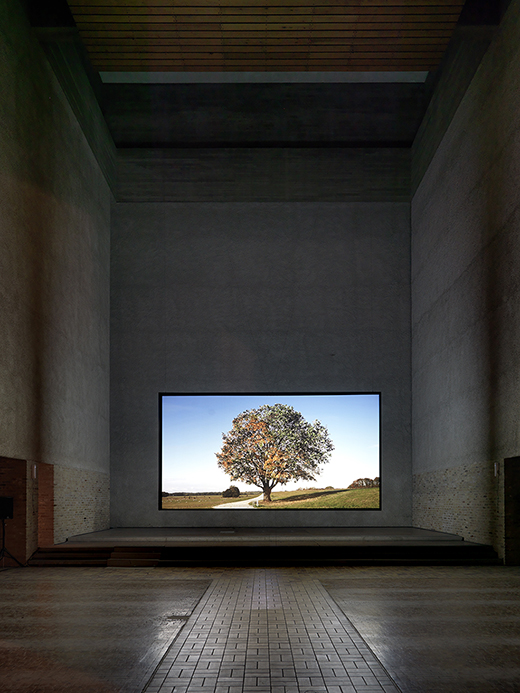
Installation View, Michael Sailstorfer Antiherbst, St. Agnes
Courtesy Johann Koenig / St. Agnes
Koenig packed a full weekend’s worth of programming into his collector’s schedules. Sailstorfer’s opening was followed by a dinner at Koenig’s residence in the St. Agnes’ former rectory where gallery artists like Jeremy Shaw, Tue Greenfort, Corinne Wasmuht, and new addition Jessica Jackson Hutchins (whose exhibition opened at the main gallery on Friday night) reveled long past midnight alongside Anna-Catharina Gebbers, curator of MoMA PS1’s current Christoph Schlingensief retrospective, and major collectors like Brigitte and Arend Oetker. The morning after Hutchins’s opening, those still standing headed to toast the addition of Jorinde Voigt to the gallery’s program with yet more champagne at the studio she shares with partner Christian Jankowski.
Rain rolled in Friday morning and temperatures hovered in the upper 30s putting a serious damper on the festivities. “I almost cried when I looked outside this morning,” one gallerist lamented that afternoon standing in a what for Gallery Weekend was a frighteningly empty gallery. Normal art fairs may still see swings in collectors’ moods and buying habits due to weather. Due to Berlin’s fair-throughout-the-city model, those effects are generally much harder felt. But somehow by the evening galleries were once again full to the brim.
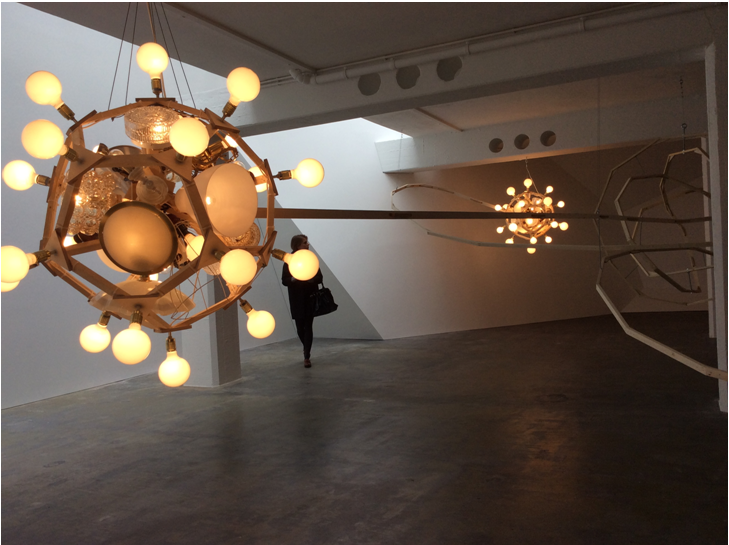
Installation View, Björn Dahlem Orbits of High Velocity Stars, Galerie Guido W. Baudach
Photo: © Alexander Forbes
“I almost thought I was going to have to close the gallery, it was so packed,” Gallery Weekend organizer Guido Baudach gushed at the gala dinner the following night. He’s showing a gallery-spanning installation by Björn Dahlem, for which the artist also changed the room’s shape into a slightly more crystalline form. It’s not to be missed.
Two trends stood out prominently across the weekend’s exhibitions. While known for eschewing (whether by choice or not) market influence, Berlin hasn’t been immune to the latest uptick in the speculation for young art. Two of that movement’s most recognizable figures, Christian Rosa and David Ostrowski are currently on show at CFA and Peres Projects, respectively. Public perception was split, interestingly. Some swooned for Rosa’s latest, saying the works essentialized a mix between Cy Twombly and Sigmar Polke. Others found Ostrowski’s quartet of four-meter-tall canvases profound representations of nothingness or, as he calls it, the void. Rarely did anyone like both in equal measure, citing that one or the other was too calculated in approach.
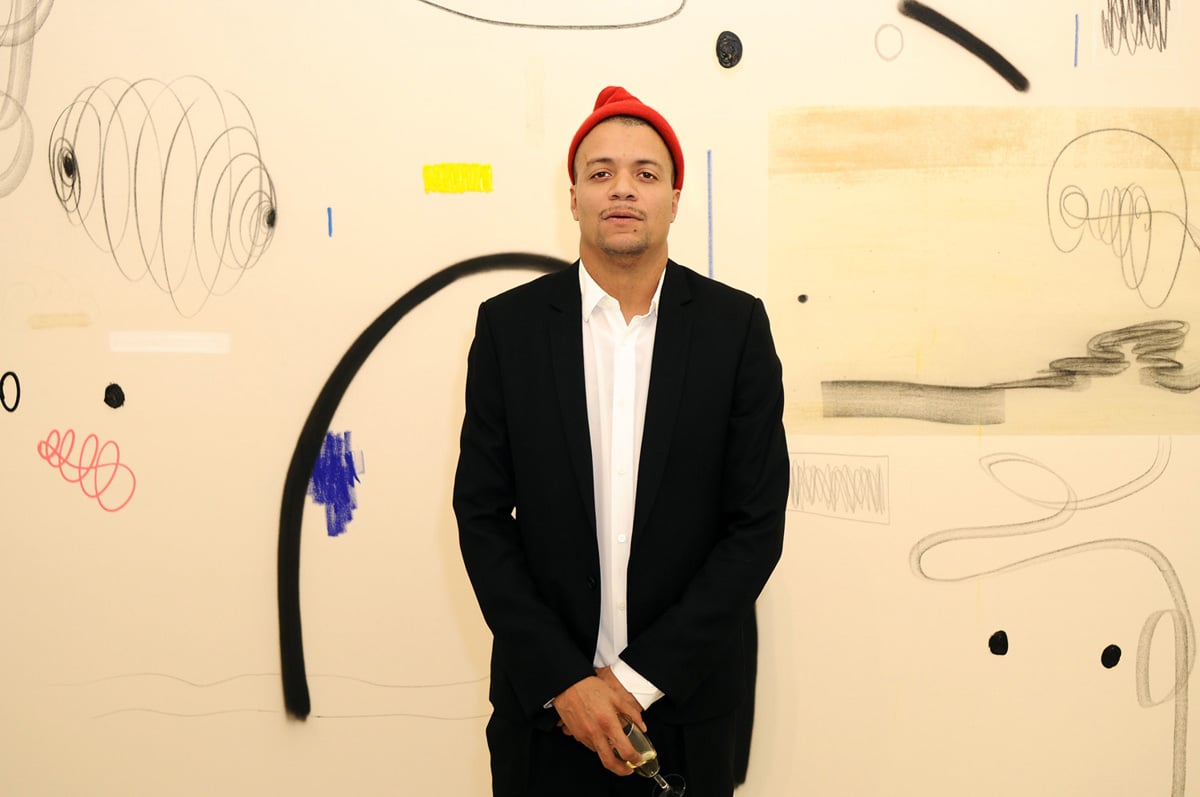
Christian Rosa at CFA
Photo: Maxime Ballesteros, courtesy Gallery Weekend Berlin
According to CFA’s Philipp Haverkampf, sales of Rosa were pacey to say the least but mostly to German collectors. “Fifteen hundred people came by yesterday alone,” he said, standing in what was still a packed gallery on Saturday afternoon. The paintings themselves mark a move towards a slightly more reduced visual vocabulary for the artist. Haverkampf says Rosa has taken that reduction even further in recent works, but that “for this first solo exhibition we wanted to let people see [the former style] once first.” The choice to stay “on-brand” is perhaps also a testament to the skepticism with which the German market tends to view these latest market darlings.
At Peres, the question wasn’t one of if the four Ostrowski’s were sold but rather to whom. The works were priced at around $50,000, representing a noticeable rise over his last exhibition at the gallery where works approximately a third the size were listed in the realm of €11,000 but nowhere near the price surge on the auction market, which hit a high in January when one work went for $142,206 or even recent, local results which saw a 51 x 41 cm work go for €30,000. The gallery was tight-lipped about who exactly would be getting each of the four works, but Patrizia Sandretto Re Rebaudengo and son Eugenio were seen meeting with Peres on Saturday afternoon. “David’s work has enough power to also be striking in a smaller dimension,” Eugenio later commented. “Nevertheless, it’s good at this stage of his career that he has the courage to experiment and to take risks.” Their Fondazione Sandretto Re Rebaudengo has avidly collected Ostrowski, having also placed him in their exhibition Beware Wet Paint, which will travel to the ICA London later this year.
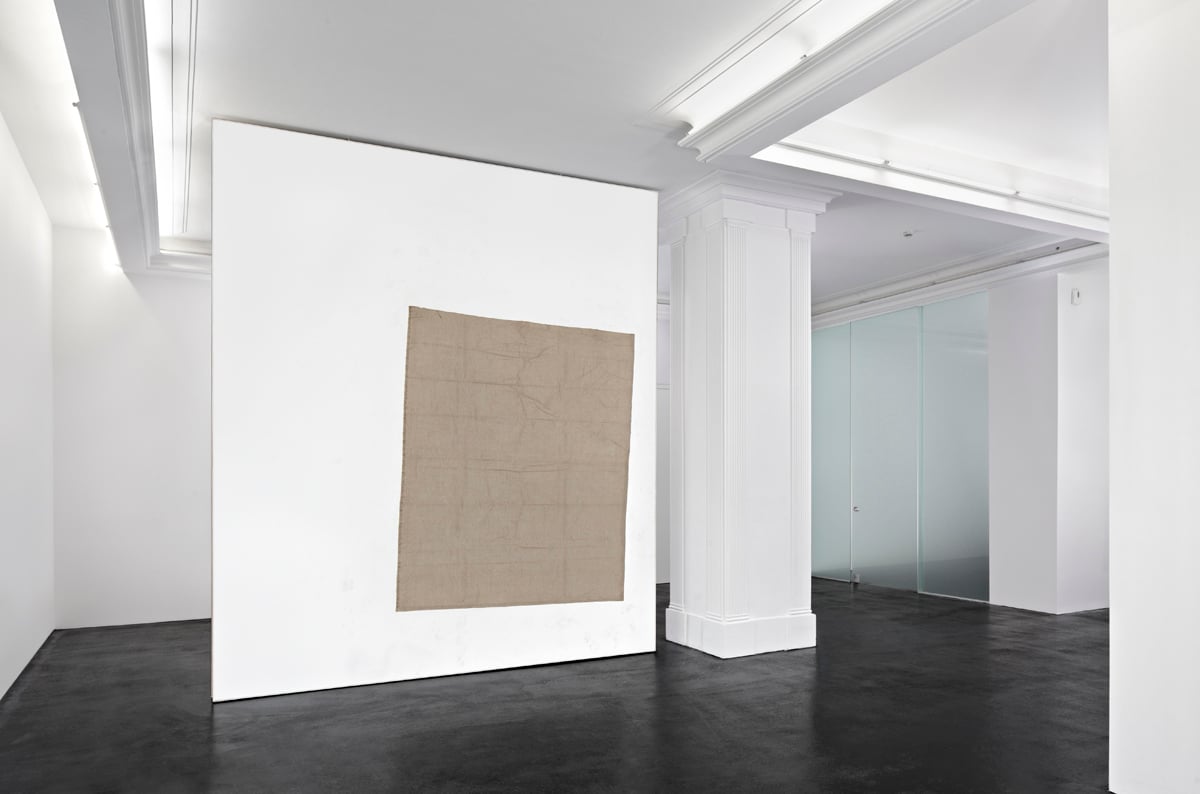
Installation View, David Ostrowski Emotional Paintings, Peres Projects
Courtesy Peres Projects, Berlin
The art world’s current critical darling of a movement, post-internet art, was also out in full force. Kraupa-Tuskany Zeidler opened a second show with Katja Novitskova (of Post Internet Survival Guide (2010) fame) who’s scoured the depths of archival imagery from NASA’s three mars rover exhibitions—Spirit, Curiosity, and Opportunity—like an avid conspiracy theorist for terrestrial-looking phenomena. Sculptural representations of her findings—a giant flamingo head, and a series of cartoonish arrows among them—are spread throughout the gallery but are likely sprung from primitive survival mechanisms in the human brain that create known items from unknowns than they are from any discovery of alien life.
Neil Beloufa’s contribution to Carlier Gebauer’s group show Memory Palaces is also a post-internet highlight. The installation, Party Island-aquarium (2013), which features a steel frame bedecked with pool noodles, features a video set within a Tiki bar featuring pantsless waiters, another man singing the virtues of the kebab he’s just eaten to a female companion, and other women tiredly flicking through stock photos of tropical scenes on their iPads.
Where new media is concerned, transgender artist Wu Tsang’s installation at Isabella Bortolozzi Galerie takes the cake. The gallery presented A day in the life of bliss (2014) a two-channel video installation that premiered at Houston’s Diverse Works in March. The piece, which features performer Boychild (here, named Bliss), is set in the near future, and centers upon the influence of a new social network called PR+SM. It is so powerful that the internet personas and avatars of its members appear to achieve some semblance of free will separate from the people they actually represent. “You gotta be seen to exist,” one character’s avatar types to those of her companions; nearly all dialogue is shown on a small, third screen above the other pair. Wu Tsang staged a performance of a similar vein on Friday evening for the opening, which saw a remarkably long line of expectant guests form outside the gallery.
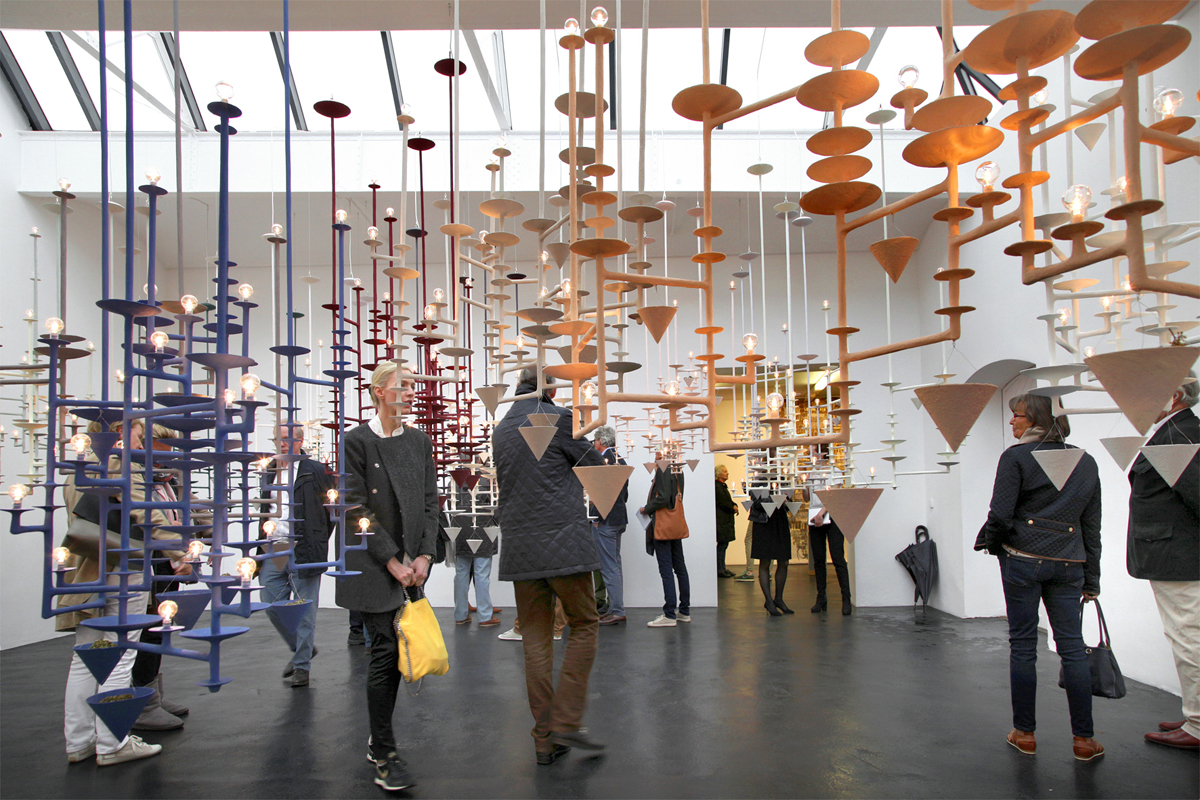
Installation View, Pae White Special No. 127, neugerriemschneider
Photo: Marco Funke, courtesy Gallery Weekend Berlin
Curiously, little fuss was officially made about Gallery Weekend’s 10-year anniversary at its pair of events. But for many, it was reason to look back. “Ten years ago there were 15 of us,” Atle Gerhardsen of Gerhardsen Gerner (showing an exciting new series of LED works and a large sculpture by Julian Opie) reminisced on Sunday afternoon. “You could see everyone at the dinner; you knew everyone. Last night, I barely knew anyone.” But, he continued, that’s a good thing, signaling a continued growth and internationalization of the much-copied event and of its home city as well.
Tim Neuger, one half of eminent Berlin gallery neugerriemschneider alongside Burkhard Riemschneider, concurred at their joint dinner on Friday night with fellow Gallery Weekend founder Esther Schipper (showing Liam Gillick). “I’m happy when the artists are happy,” he said, suggesting that without their support Berlin would be but a speck on the art world map. Evidently, neugerriemschneider artist Pae White was thrilled with both the critical and collector response, judging by the turnout, which included Richard Chang, Karen and Christian Boros, Ingvild Goetz, and an adviser to the Ullens Center. White showed a new series of chandelier-like sculptures, each of which is covered in a different color of epoxy (in the end they look to be made from clay) and from which dangle cones of material ranging from pet ashes and herbs to a vodka martini.
While that artist-focused estimation still rings surprisingly true, Berlin is changing subtly. That’s best seen at Galerie Neu’s new gallery space down the street from neugerreimschneider on Linienstrasse. Currently celebrating their 20th anniversary with a survey of their program, Alexander Schröder and Thilo Wermke opted to relocate to a former mini-power and utilities station in the courtyard of a block of East German Plattenbau. Like many galleries in Berlin, it’s difficult to find and pretty dumpy looking from the outside. But inside, the space is rivaled only by Sprüth Magers for its embodiment of the white cube ideal.